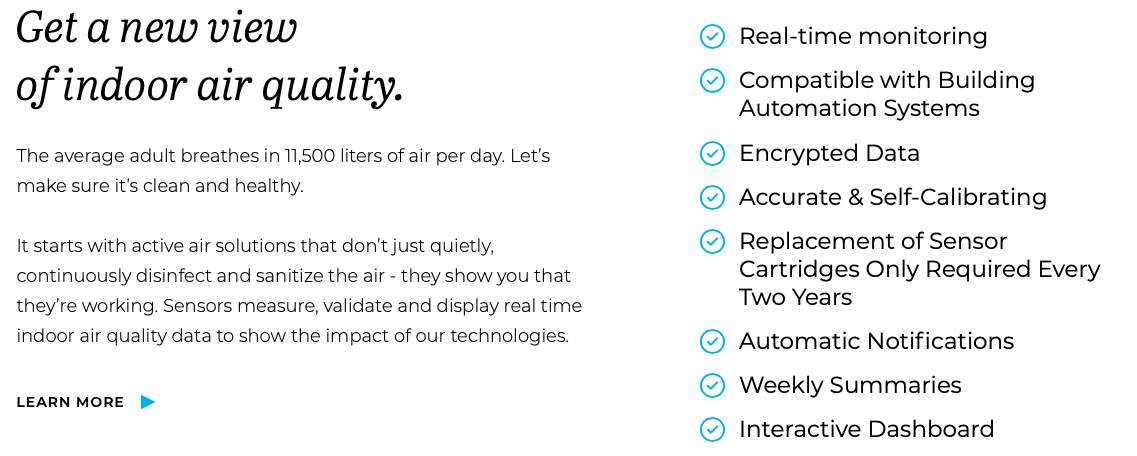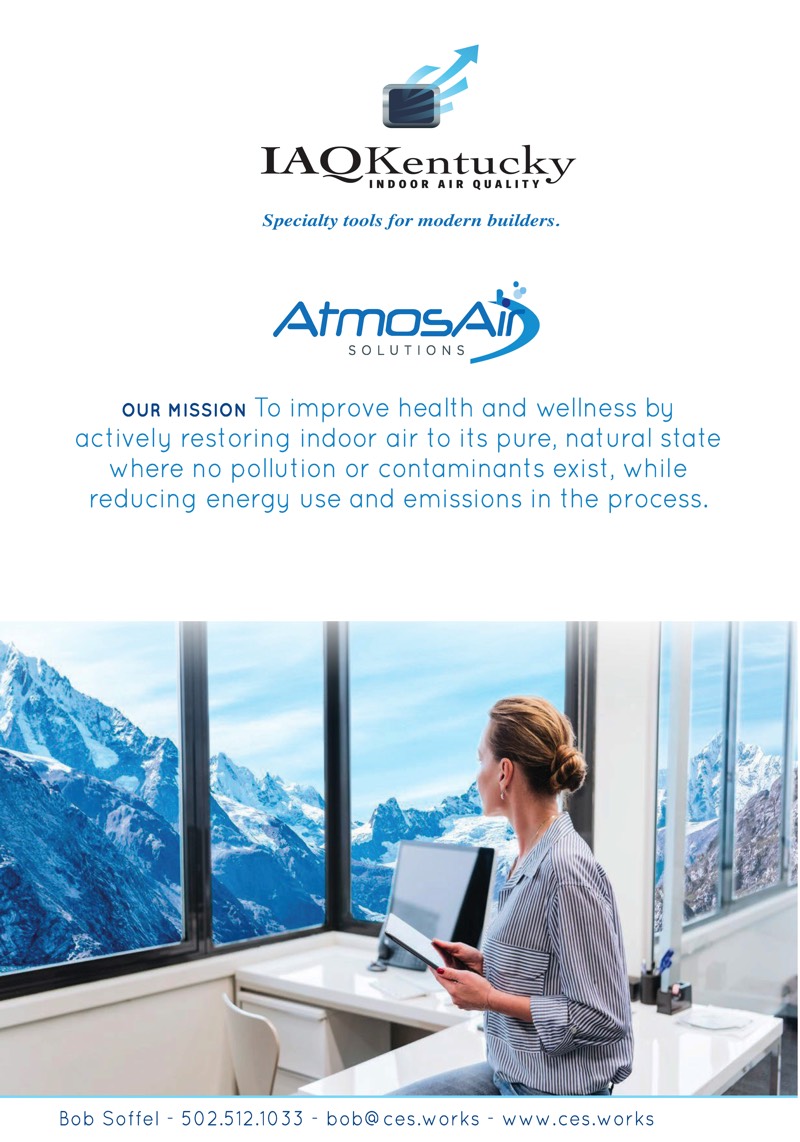AtmosAir
“It is the most effective system for continuously cleaning and decontaminating indoor air.”
Dr. Philip M. Tierno, Jr.
Professor of Microbiology & Pathology NYU School of Medicine NYU Langone Medical Center
US Member of the Global Hygiene Council

Real time monitoring:
See the quality of air you breathe.

Newsworthy and notable press.
Include both technologies for a complete IAQ solution. And, an energy savings powerhouse.
AtmosAir and Aeroseal together are a scalable facility ‘one-two punch’ for immediate resolution of airflow challenges and continuous air purification for all types of buildings. AtmosAir makes robust, healthy air attainable with bipolar ions, Aeroseal assures they are not wasted and get to the occupied spaces where we breathe. Compound interest on your ROI – with broad additional benefits.
Improve the health and wellness of your indoor air quality
Largest manufacturer of bi-polar ionization air purification systems
Proven air purification technology acts as an a continuous disinfectant, actively reducing a wide range of airborne and surface contaminants
Helps eliminate odors while also reducing dust, mold, mildew, and allergens.
Indoor Air Quality Benefits
Virus filtration
Improve productivity and reduce absenteeism by reducing mold, bacteria, viruses and germs - Reproductive cycle of bacteria and viruses are interrupted and colony forming units are reduced.
VOC Reduction
Odor Control Solution; Up to 90% of VOCs are reduced and broken down
Particle Reduction
Up to 95% of Ultrafine Particulate is Reduced
Air monitoring
Track and Measure the health and wellness of the Workplace - Real-Time monitoring of CO2, PM2.5 (particulate), and Volatile Organic Compounds (VOCs) among other IAQ parameters.
Energy Benefits
AtmosAir presents an opportunity to reduce energy consumption, filtration efficiency, and
greenhouse gas emissions.
In both new design and retrofit projects, a 50% Reduction in Outside Air Heating/Cooling Load is Possible generating 4-8% total utility energy savings.
A good rule of thumb to use for retrofit
projects is $0.12-$0.18 per square
foot in energy savings.
Productivity Benefits
Think energy savings are valuable? Businesses are realizing how much productivity is truly worth.
It has now been shown beyond reasonable doubt that poor indoor air quality in buildings can decrease productivity in addition to causing visitors to express dissatisfaction. The size of the effect on most aspects of office work performance appears to be as high as 6-9%, the higher value being obtained in field validation studies.
Even if customers only recognizes a 1% improvement in productivity from the AtmosAir enhanced IAQ system, the system will pay for itself in less than 1 year.
Indoor Air Quality -
Why It Matters:
Clean air is a critical component to our health. Air pollution is the number one environmental cause of premature mortality, contributing to 50,000 premature deaths annually in the United States and approximately 7 million, or one in eight premature deaths worldwide.
Globally, outdoor air quality is deteriorating due to pollution from traffic, construction, agricultural activity, combustion sources and particulate matter. Because ambient air diffuses easily, even distant sources of pollution have a huge impact on the more than 15,000 liters of air we breathe every day. Indoor air quality can be degraded by these outdoor sources, as well as by off-gassing from building materials, indoor combustion sources and water leaks. Poor ventilation practices can fail to address these sources, exposing us to volatile organic compounds (VOCs), polycyclic aromatic hydrocarbons (PAHs) and microbial pathogens. Another way in which indoor air quality may be diminished is via surfaces, which can accumulate airborne germs. All of these contaminants contribute to a range of negative health outcomes such as asthma, allergies and other upper respiratory illnesses. In addition, air quality issues can diminish work productivity and lead to sick building syndrome (SBS), where no disease or cause can be identified, yet acute health effects are linked to time spent in a building. SBS symptoms include various nonspecific symptoms such as eye, skin and airway irritation, as well as headache and fatigue.
The reactions people have to air pollutants vary widely and depend on multiple factors including the concentration of the contaminant, the rate of intake and the duration of exposure. Pollution source avoidance, proper ventilation and air purification are some of the most effective means of achieving high indoor air quality.
Clients Include

SDVOSB
Service-Disabled Veteran-Owned
Small Business
2021 Critical Environmental Solutions










